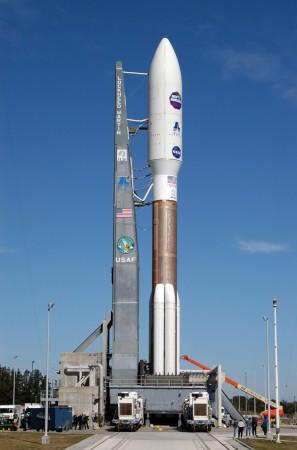
Rockets are among the largest and most powerful machines that humans have made. They need to be of a certain size to be big enough to carry all the fuel needed to carry their payload to space and fast enough to escape velocity or the speed that will allow objects to break free from the Earth's gravity.
All this amounts to loud engine sounds. A rocket engine at full blast is not something that anyone should be near. At 200 decibels, the noise levels are about 80 decibels more than what a human can bear and is well beyond the average pain threshold. This is one of the reasons why viewing galleries are so far away from launch pads.
Apart from the immense heat that launches generate, the sound alone is enough to not only hurt people, it can literally set hair on fire and even topple buildings, notes a report by LiveScience.
Here is a video of a Saturn V rocket blasting a rainbow out of the sky. Around the 1:50 mark, the rocket passes through what is being described as a Sundog. It happens when the sound waves of a rocket crash into a semi-solid medium, notes the report.
A Sundog is a wispy layer of ice crystals settled in the sky at a high altitude, the arrangement of the crystals is such that it can create a small patch of rainbow in the sky when sunlight filters through it.
The video shows the Saturn V launch that took place in February 2010, but the video went viral recently. It was filmed during the launch of NASA Solar Dynamics Observatory. The Sundog can be seen in the upper right corner of the frame and it gets completely obliterated by the force of just sound waves emanating from the Saturn V. It resembles circular waves when a stone is dropped into a pool of water, but several hundred metres across.















